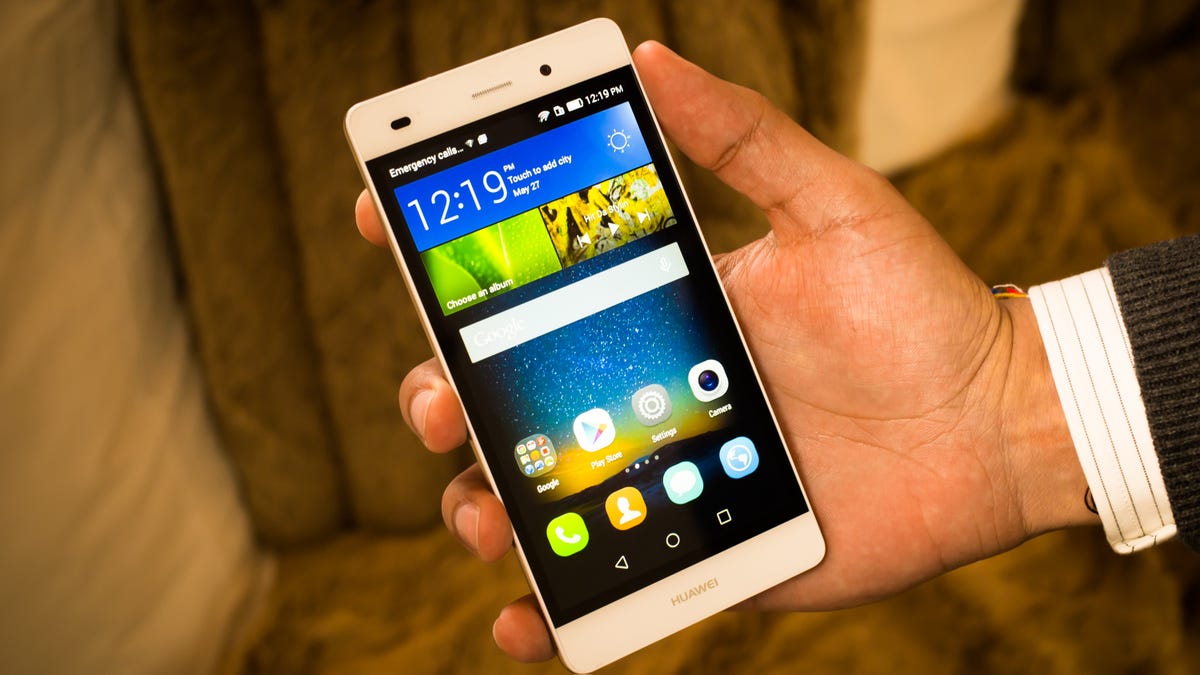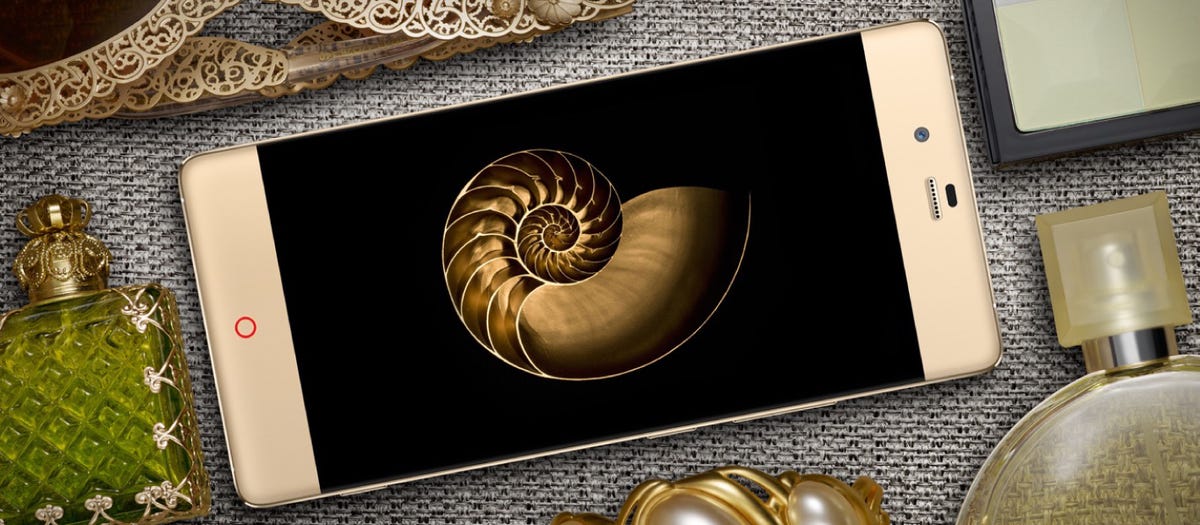
James Martin/CNET
The historical relationship between phone buyers and wireless carriers in the US is one of codependence. Traditionally, providers like AT&T, Sprint, T-Mobile and Verizon have been the major gateway through which anyone bought a new phone: two-year contract a virtual given.
Related stories
- Huawei to US: Our smartphones deserve your attention
- Alcatel’s ‘Idol 3’ inexpensive but good, with a software surprise
- ZTE Nubia Z9 follows trend, launches directly to buyers
Over the past two years, T-Mobile led the charge to blow up service agreements and sell phones without contracts, a move that rippled throughout the industry.
That shed light on the hundreds that smartphones really cost and instilled a new sense of freedom for consumers exploring different networks and devices.
It’s that spirit of practically limitless choice that three Chinese smartphone vendors — Huawei, Alcatel and ZTE — are looking to tap. Rather than sell only what carriers agree to, these Chinese companies are setting up shop on their own, and selling directly to US consumers. Their hope: build brand awareness and loyalty among a new set of phone users. For customers, the result is a whole set of new options for quality smartphones that are easier on the wallet.
These companies, however, lack the recognition of an Apple or Samsung. And they’re better known for price than quality. So the question is: will Americans buy Chinese phones from websites created specifically for the US market?
The start
You may have never heard of Huawei, but it has made waves around the world. In 2011, the company publicly set a seemingly impossible goal: to become a top-five smartphone vendor in three years. It was a global directive, but one that sounded out of reach to a US audience who could barely even pronounce the brand name, and whose common encounter with Huawei phones was with inexpensive, low-end junk seeded to mostly second-tier carriers.
Through aggressive marketing and steady phone sales, the vendor has since clawed its way to its goal — Huawei is now the world’s fourth-largest smartphone maker — despite its continued difficulty in expanding its US presence.
Sleek-but-cheap: Alcatel OneTouch Idol 3 (pictures)






That’s why, a year ago, Huawei launched GetHuawei.com, a website to sell a greater variety of Huawei handsets to interested buyers.
Right now, GetHuawei.com sells three phones (the Ascend Mate 2 , P8 Lite and SnapTo ), one tablet and one wearable, a smart band. A yearlong warranty and live chat with a sales rep help Huawei establish a direct relationship with the buyer, and a forums board helps foster a sense of community.
While Zhiqiang Xu, president of Huawei Device USA, wouldn’t say exactly how many phones Huawei initially sold through the site, he said sales were strong enough to follow up with more devices.
“The volume is encouraging,” Xu said. “It was out of my expectation.”
The trend
Like Huawei, Alcatel and ZTE have also begun targeting US buyers in addition to placing phones with carrier partners, most notably T-Mobile for both.
In April, Alcatel, which is owned by China’s TCL Corporation, launched a website to peddle its OneTouch Idol 3 , a midlevel Android smartphone, for $250 unlocked.
ZTE’s direct-to-consumer path began in full force last October with a sponsorship of the NBA’s New York Knicks team. In early June, it unveiled the Nubia Z9, the latest in ZTE’s premium family of smartphones (similar to Huawei’s Honor line ). Like Huawei, ZTE will use its website as its primary retail channel, along with Amazon and “select retailers” to get the word out.
The benefit
Why do brands want to reach out directly to customers? When they can’t sell the phones they want to through carrier partnerships (this is a whole other kettle of fish), reaching out through a website is a relatively cheap, easy way to enter the market.
Direct sales through an unadvertised channel sure isn’t the fastest way to make money, though, or even to gain brand recognition. However, if Huawei’s progress is any indication, customers who discover the devices — perhaps through phone reviews like CNET’s — will still buy a small volume of phones.


ZTE
Smartphone vendors taking a stab at direct-to-consumer sales have their global numbers in mind, according to Carolina Milanesi, an analyst at Kantar Worldpanel.
“The US market is key to every vendor that is attempting to grow share worldwide,” Milanesi said. “China alone could give you that for a while, [but] it is not sustainable.”
For example, Xiaomi, a hot Chinese start-up that makes smartphones, has quickly become a global market share leader by successfully selling smartphone in China, but the company is looking in other emerging markets, like India and Brazil, for future growth.
So while these Chinese brands may not be hitting a home run in the US, establishing a beachhead with smaller numbers still counts for something.
The holdups
Despite the loosening of carrier control, breaking into the US is no easy task for lesser-known vendors. About 74 percent of consumers still buy their phones through a carrier, according to Kantar Worldpanel’s latest data for smartphone sales in the US. Although Amazon and Google’s Play and Nexus stores are helping nudge that behavior, Amazon only represents about 6 percent of online smartphone sales, according to Kantar’s studies.
There’s also the question of trust. ZTE, Alcatel and Huawei aren’t new to the US, but they’re relatively uncommon and what reputations they have are fairly poor. That’s because carriers pick these brands’ low-end devices to round out their portfolios, instead of a mix of high-, mid- and low-end phones supplied by Samsung or LG.
These unlocked handsets will only work on carriers using GSM technology: AT&T, T-Mobile and specific wireless resellers such as Net10 Wireless. Verizon and Sprint use an incompatible CDMA technology, which means their customers won’t be able to use this type of phone (or any other GSM device).
Even though there’s typically a 30-day return window, buying a phone sight unseen is a huge customer risk. These brands have no real way of giving prospective buyers any hands-on time with a $200 device.
So, what incentive does a buyer have to pick a phone from a relative unknown manufacturer, when there are dozens of proven handsets from more familiar brands — the likes of Samsung, Apple, LG and HTC — that are vetted by carriers and accessible in stores? Would you? And what does it take for companies to, in the words of Current analyst Avi Greengart, “overcome behavioral inertia”?
Outreach, value pricing and excellent customer service are key to ease fears of bypassing a carrier guarantor. As much as we love to hate carriers, if a phone breaks, you at least have second shot besides the manufacturer at making things right.
Is it working?
In some ways, the model is already making humble gains. Huawei has expanded its portfolio of online phones and hints at a flagship model to come. (It has also launched a consumer campaign to teach people how to pronounce its name, and extended warranty on GetHuawei phones to last a year.)


For its part, Alcatel’s Idol 3 performed better than a lot of $200 challengers and became a handset I’m recommending to CNET readers looking for a budget-friendly buy.
If these vendors’ goal truly is to notch a few more sales to add to the global tally, then the online route seems like a low-risk way for them to go, especially to catch buyers who don’t care about brand, have a high degree of trust purchasing goods online and are looking for a wallet-friendly phone.
It’s going to be a tough sell for everyone else, and one that takes time to see any meaningful longterm gain.
However, it’s also likely that one day an unknown vendor will be able to gain ground on a particularly compelling phone that has almost all the high-end features of the going flagship model, but at half the price.
When that day comes, intrepid buyers will loosen the carriers’ grip a little more.
Roger Cheng contributed to this column.


CNET
Smartphones Unlocked is a column that dives deep into the inner workings of your trusty smartphone.



